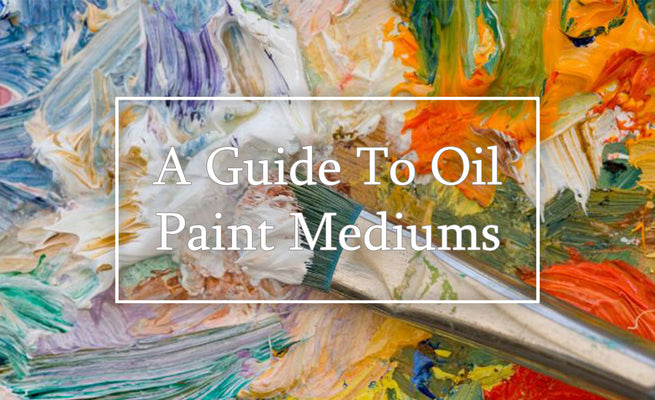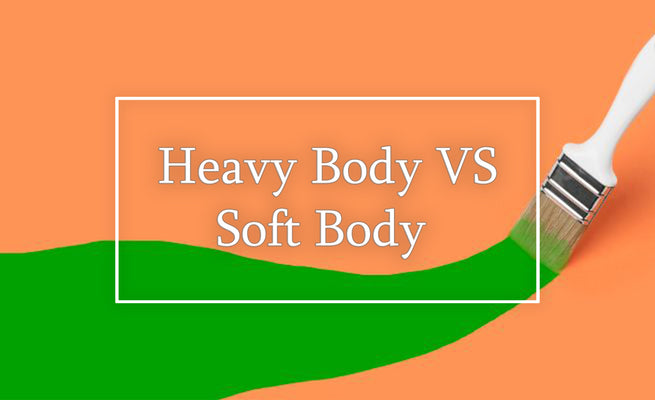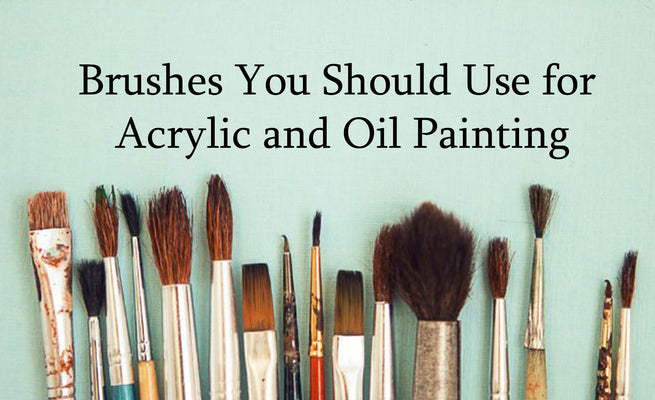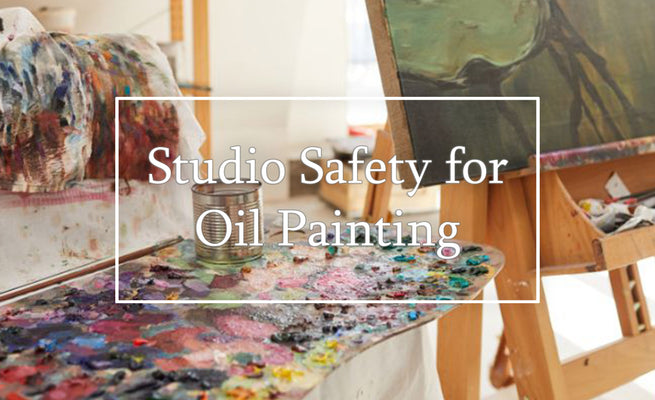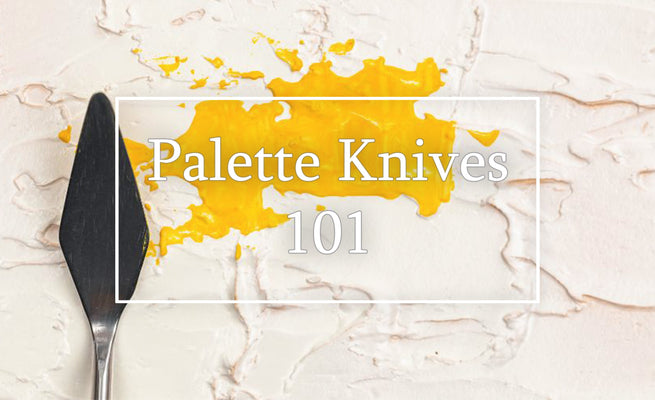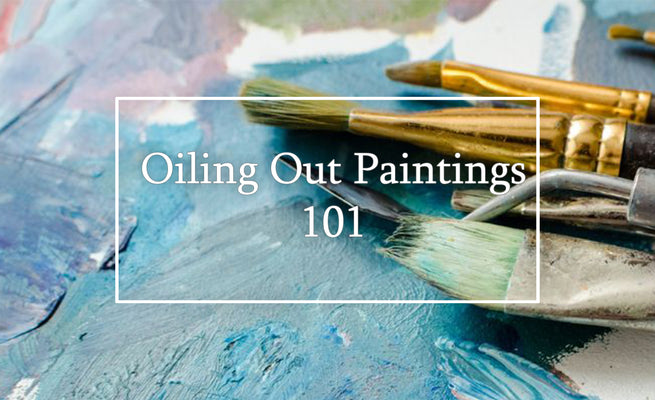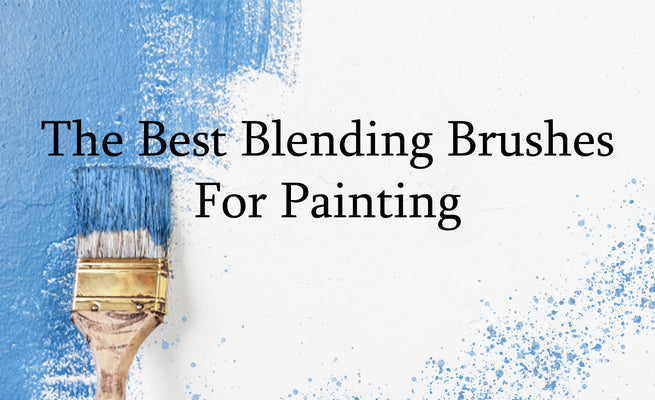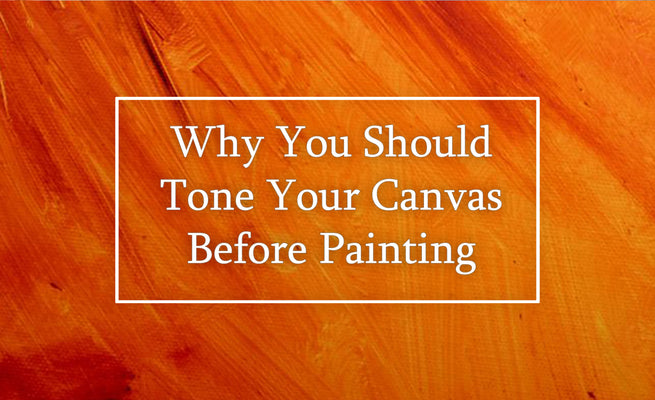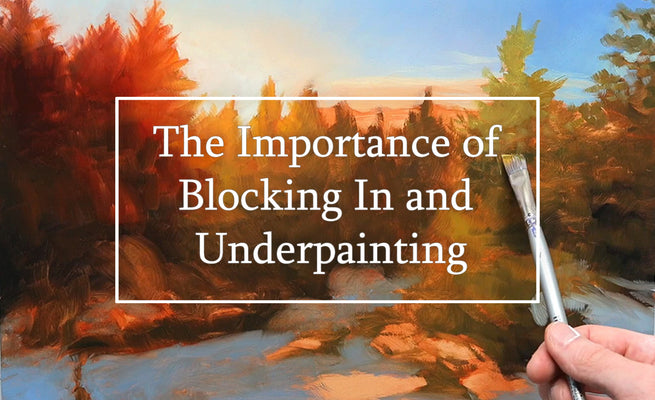One of the most common questions I'm asked is "which paint brushes do I need?" There are so many oil and acrylic paintbrush options available that, at times, it can be a little overwhelming. Hopefully in this post I can help narrow things down and define what each of these paint brushes brings to the table. So here is my top 10 favorite paint brushes that can allow you to paint practically anything with oils or acrylics.
Note: This blog contains affiliate links and purchasing through them supports our site at no extra cost to you.
First off, it's the Liner Brush

When it comes to this small pointed brush, there's really only one thing that comes to mind for me, and that's signing my paintings. When I'm ready for that final step, I need a brush that handles like a pen, feels comfortable in my hand, and produces sharp, accurate results. Luckily, the liner brush fits all of those needs for me.

It can require a little bit of effort when using acrylics, but with oils, since they flow so easily, you can produce very sharp and accurate results. Aside from that, I don't use the liner brush for much of anything anymore and you'll see why in a minute!
Next up is my favorite brush, the Dagger Striper.

When using the sharp bladed edge, you can produce amazing blending effects with acrylics and even more so using oils.

Rotate the brush a quarter-turn to use the tip and the dagger striper can produce some of the most beautiful lines, and in my opinion, even more stunning than what a liner or rigger brush can achieve.

The curvature of the brush allows you to load up on a lot of paint that can be used to lay down beautiful, thick, expressive brushwork.

The type of brushwork that gives you a very natural and non repetitive look.

Flip the brush upside down and you can create some of the smallest details.

The curved shape also allows you to rotate this brush as you work to create some very unique strokes that can be utilized for smoke or fire as an example.

______
The next brush is the Round Blender
As you may guess, this brush is excellent for creating very rounded blends. I like using the Princeton Select Natural Hair brushes in sizes #6 and #12.
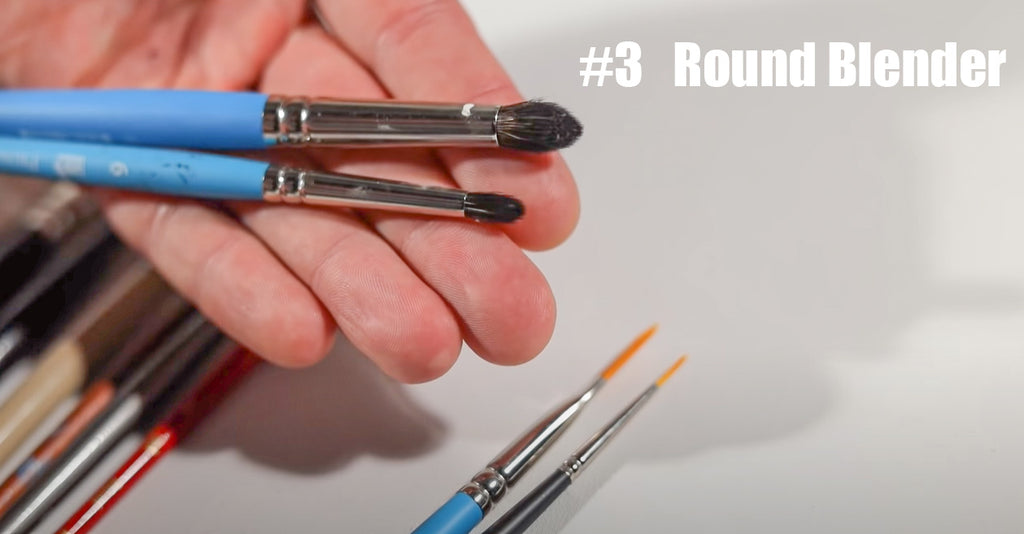
The large round blender is similar to a mop brush in that it's very soft, but it has a lot of bounce and pull that allows you to move the paint easily on the canvas for flawless blending.
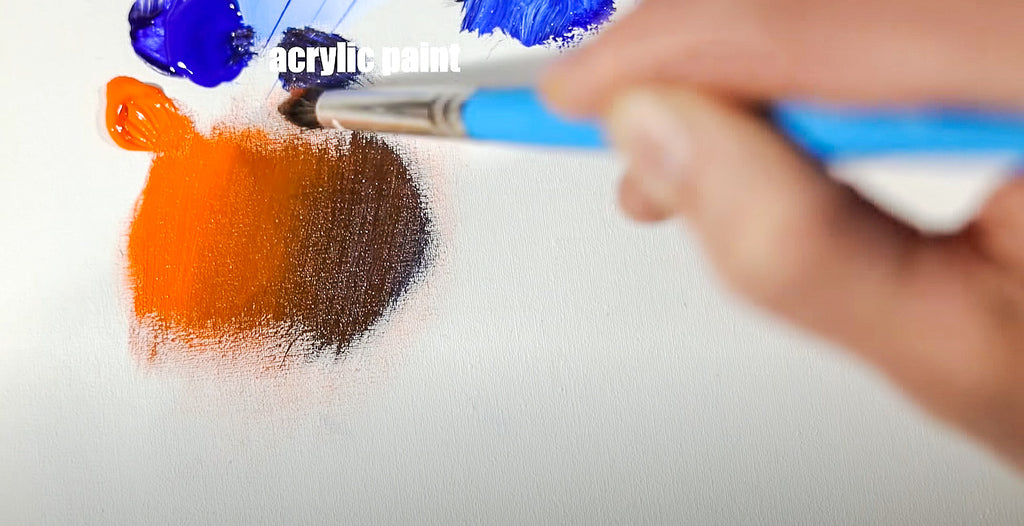
When you move down to the smaller sized blender, it allows for the same flawless blending to be applied with extreme precision. I use this one all the time when I'm trying to create blur effects. The smaller round blender allows you to create a range of focal blurs and seamlessly tie those them together so you can achieve a smooth, buttery bouquets transitioning into that sharp foreground detail.

The next two brushes in my arsenal are my Round Brushes.
I always have one small and sharp and one that's larger and soft. The small and sharp round brush creates some nice line work similar to a liner brush or dagger striper, but it lacks the control.

The advantage to using this brush is that it has a thicker body with more hairs, allowing you to load more paint onto the brush and allows you to take each brush stroke further with out having to go back and pick more up as you work.

It creates beautiful rounded textures and patterns and also allows you to get in close for details.

However, when it comes to signing my work, you can see that this particular small round brush just doesn't live up to the liner brush.

Having a larger and more softened round brush is very useful in my work as well.

I can use the soft end to pat my way across the canvas to create a very sporadic and unique texture; something that looks non repetitive and natural. It also allows me to blend in a similar way to the round blenders except with this brush, because of its smaller size I have much more precision and control.

This is an excellent brush to use use when you reach portions of your painting you want to add detail to, without going overboard and end up being a distraction from your main subject.
Another Important set of brushes are my Angular Brushes.
My favorites are the size #6 and #10.

These are essentially just flat brushes with a chiseled angle. I love having the benefits of a flat brush but in an angled, asymmetrical design as it provides more versatility.

In addition to the benefits of a regular flat brush, I can rotate it to create some unique results.

This is truly the workhorse of my collection as I paint most large areas of the canvas with this as well as do the majority of the blocking in with it.
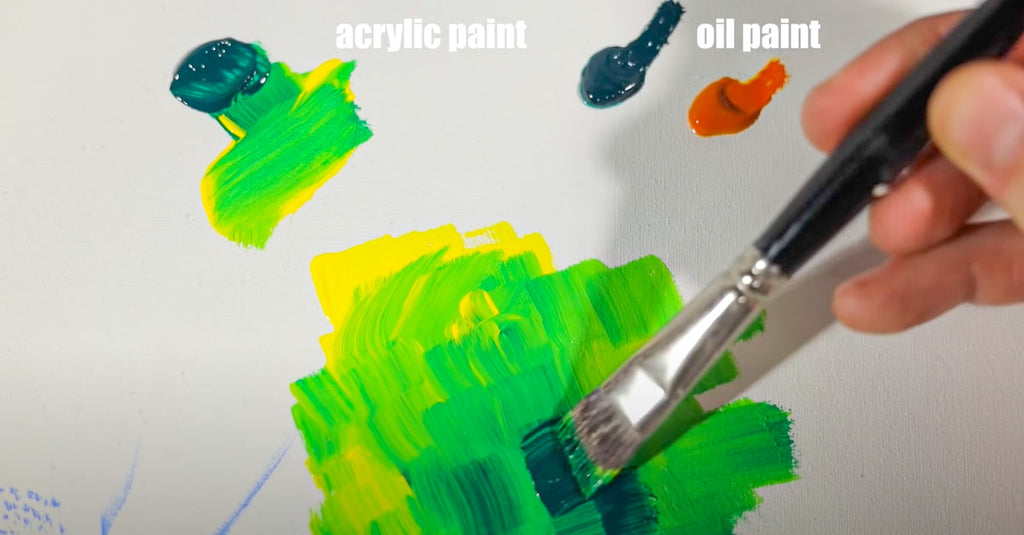
When it comes to the smaller version, I get the same great benefits, but on a tighter more precise scale. One of the best parts about this brush is that the older it gets, the more unique types of patterns and texture you can create with it.

Now I can't forget about my trusty Fan Brushes.
I have two different kinds of fan brushes, one very large size #6 fan blender made from natural bristle and the other is a size #2 fan brush and is much smaller with synthetic bristles.

The smaller fan brush allows me to create those classic Bob Ross style pine bows as well as rotate it to create a variety of patterns and textures.


You can even load it unevenly (add more paint to one side of the brush) to create some artistic and creative effects.

With the larger fan, I only have one purpose for it and that is blending. This brush is a blending master. You can use the width of it and the stiffness of it to push and pull the paint which creates seamless blends on a very large scale.

Use the brush to pat to create a little bit of texture in any of those blends.

When it comes to starting my paintings, especially if it's on a large scale, I like to use this large Bright Brush.
This brush has only one purpose for me and that's coverage.

I use this brush for blocking in any initial stages of the painting where I need to fill in large areas of the canvas.

Now, last but not least, is my 1.5" Flat Brush.
This brush is a specialty brush for me as I don't actually use it for painting, I use it specifically for applying varnish to my finished works.

When I'm varnishing my paintings, I want something very stiff, something I can scrub the canvas with and really get that varnish worked into the canvas well. This brush fits the bill fantastically for that purpose.

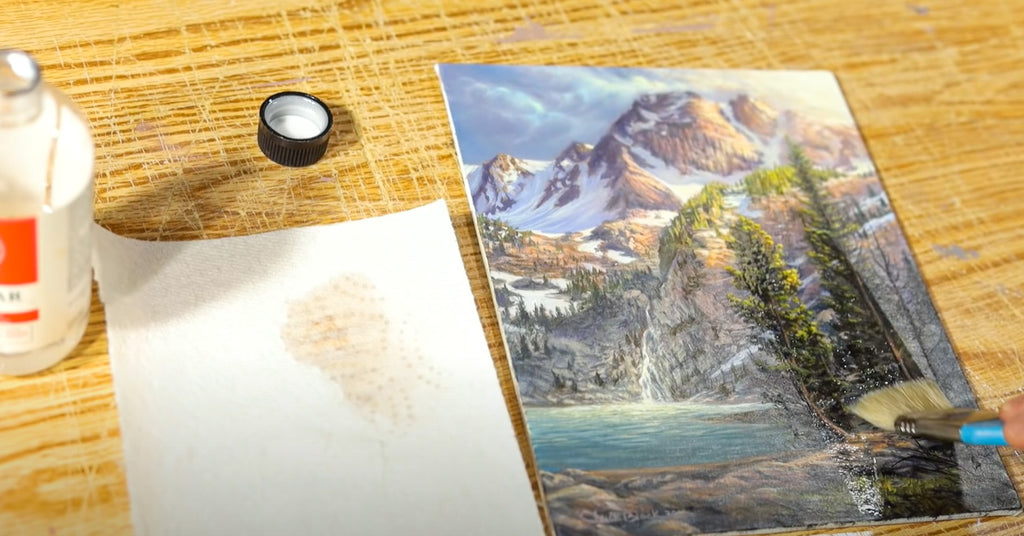
So when it comes to the brushes that I use, whether I'm working on realistic feather detail in my wildlife art, or whether I'm trying to show depth and atmosphere in my dramatic landscapes or I'm adding the light shining through a soft, warm sunset....

These brushes are all I need. If I had to pick only one, I'd pick the Dagger Striper. If I could pick a second, it would be the large 1" Bright. And if I could choose a third, it would be the small angular. One for detail and precision, one for coverage and blocking in, and one for precise blending and texture work.
Every artist is unique in how they use brushes and for me, I'm not big into expensive brush lines. But remember, if you're curious about trying something new, it's never a bad idea to experiment and familiarize yourself with different brush types to find out what works for you best. You never know, through your trials and errors you may find your new favorite essential paint brush.
Happy painting!
-Chuck



